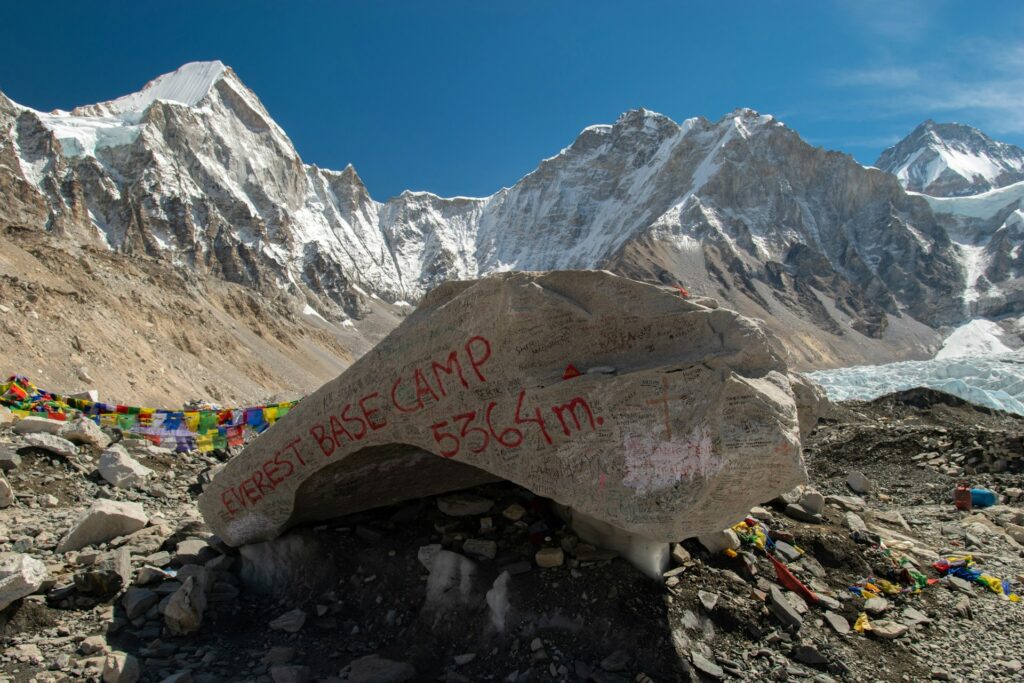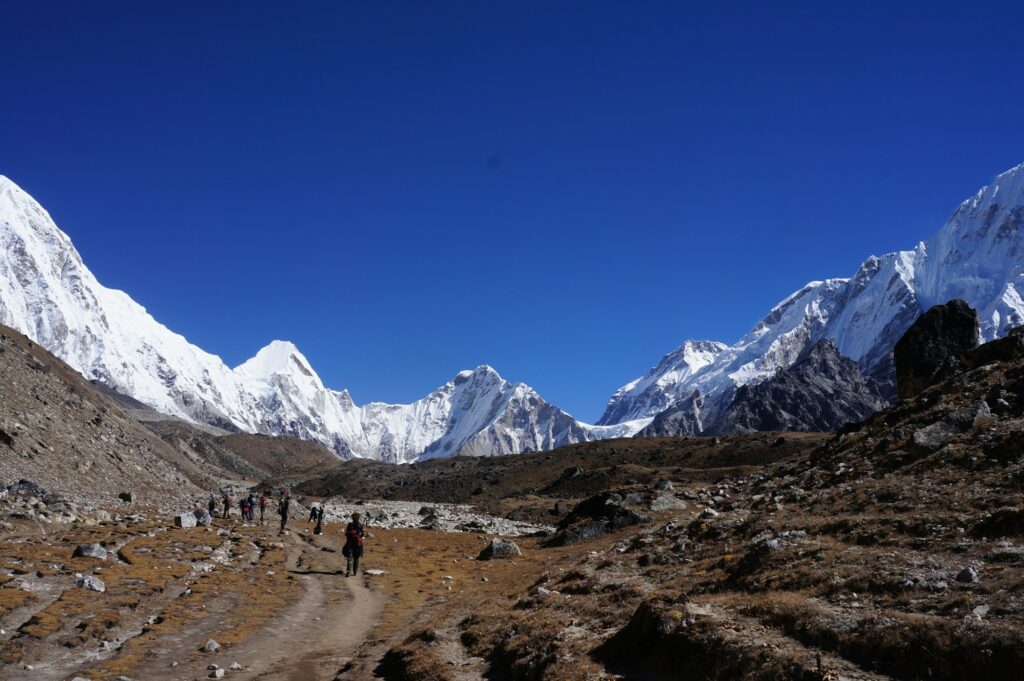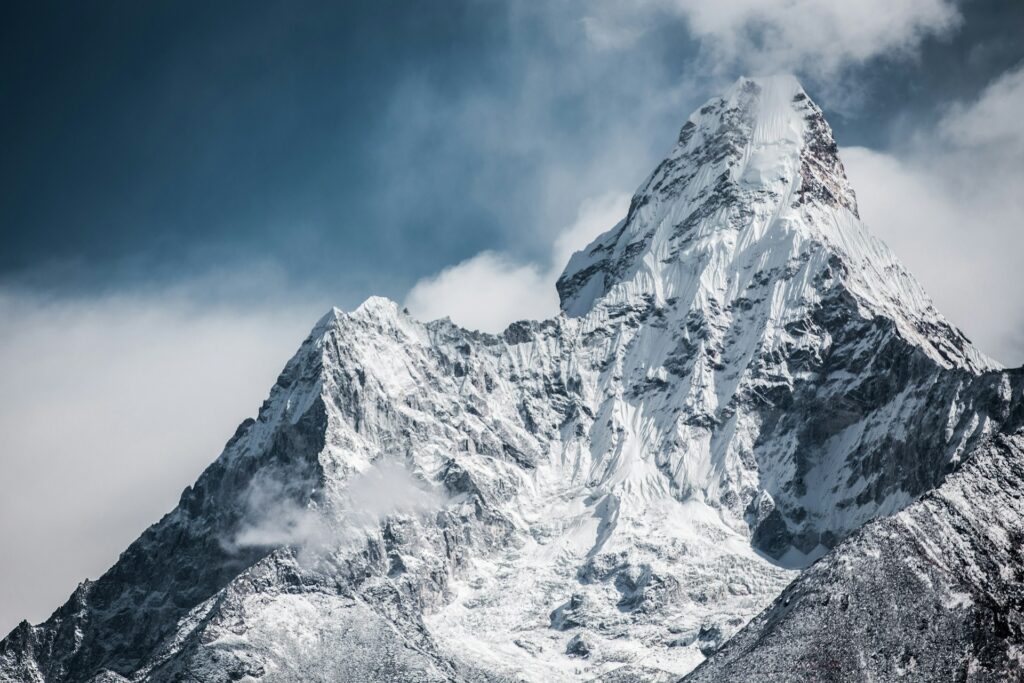The Everest Base Camp (EBC) trek is one of the world’s most iconic bucket list adventures. Many people dream of standing beneath the towering peak of the world’s tallest mountain—but before lacing up your hiking boots, you might be wondering: how hard is it, really?
The answer isn’t entirely straightforward. The trek is absolutely doable for most people with a decent level of fitness and good health—you don’t need to be a mountaineer or elite athlete to take it on. At the same time, it’s tough enough that when you finally finish, you’ll feel genuinely proud of yourself.
Beyond the physical fitness it takes to complete, the Everest Base Camp trek is challenging in ways many people don’t always expect. You’ll face a fair share of discomfort—like freezing cold nights that really test your resilience and determination.
Let’s take a look at the unique challenges involves and give you an honest picture of what the trek demands.
It’s Not a Technical Climb—But It’s No Walk in the Park Either

First things first: this isn’t a technical climb. There’s no need for ropes, harnesses, or crampons. If you’re picturing Everest summit attempts with oxygen masks and ice axes, relax—that’s not what this trek is about.
There are no vertical ascents or rock faces to scale. Instead, the trek is a long-distance hike through the Himalayas, reaching altitudes over 5,300 meters (17,500+ feet).
The EBC trek is essentially a long, high-altitude hike through the Khumbu Valley. You’ll be walking on rocky trails, crossing suspension bridges, and passing through traditional Sherpa villages.
But make no mistake—just because there’s no technical climbing doesn’t mean it’s easy. The high altitude, cold nights, and long days on your feet take real determination and solid prep.
Altitude: The Silent Challenge
If there’s one thing that catches trekkers off guard, it’s the altitude. As you climb higher, the air gets thinner. By the time you reach Everest Base Camp (5,364 meters/17,598 feet), you’re breathing in about half the oxygen you’re used to at sea level.
Altitude sickness doesn’t care how fit or young you are – it can affect anyone. Symptoms range from headaches and dizziness to nausea, poor sleep, and loss of appetite. The higher you go, the thinner the air gets, and even mild effort can leave you breathless.
To help prevent altitude sickness, talk to your doctor about medications like Diamox, and check whether the trek might impact any existing health issues. And be honest with yourself—if you’re the type to crumble at the first sign of a headache, this might not be the adventure for you.
Acclimatization is key, and a well-structured itinerary will allow your body time to adjust.
Himalaya Heart, a Nepal-based trekking company, carefully plans their 12-day Everest Base Camp treks to prioritize safe elevation gain and rest days. Their knowledgeable local guides are trained to spot the signs of altitude sickness early and respond appropriately—giving you both peace of mind and a better shot at reaching Base Camp.
What Does a Typical Day Look Like?

Most days on the EBC trek involve 4 to 6 hours of hiking, with a couple of longer days mixed in. The distance might only be 8–15 kilometers (5–9 miles) per day, but don’t let that fool you. Hiking uphill at altitude takes time, and you’ll need to go slow and steady.
Some of the terrain is steep or uneven, and you’ll gain elevation gradually as you move from one teahouse to the next.
Expect early starts, lunch breaks at tiny mountain lodges, and downtime in the afternoons to rest, read, or play cards with fellow trekkers.
Weather: Beautiful, But Unpredictable
The best times to trek are pre-monsoon (March–May) and post-monsoon (late September–November). During these months, the skies are usually clear and the views spectacular. But weather in the Himalayas can be fickle.
One of the biggest challenges on the Everest Base Camp trek is the cold—especially after sunset. Above 4,000 meters, expect temperatures drop to well below freezing at night. Teahouse bedrooms usually have single-pane windows and no heating, so don’t be surprised if you end up sleeping in all your layers and still feel the chill.
Daytime conditions can be tough too, with strong winds that cut through your clothes and bright sun that reflects off the snow. You might experience warm sunshine, howling winds, rain, or even snow—all in a single day. A good down jacket, warm hat, and a solid pair of sunglasses are absolute essentials.
Teahouses and Trail Life
The accommodations along the trail—called teahouses—are simple but charming. Most offer basic rooms with twin beds, shared toilets, and hearty meals. Don’t expect luxury on this trip.
Electricity is often available (for a fee), but Wi-Fi is patchy at best. Showers exist, but they’re usually cold or cost extra.
Cleanliness can be a real challenge on the Everest Base Camp trek —you might go days without a proper shower, and your clothes won’t get much washing either. Some teahouses use basic long-drop toilets, which can be a shock if you’re used to Western comforts. Ultimately, if you’re a bit of a germaphobe, it’s worth considering how much you’re willing to embrace the rougher side of the trek.
Food options tend to be limited, especially if you have dietary restrictions or strong dislikes. Meals tend to be carb-heavy – basically warming comfort food meant to fuel your long days on the trail.
Expect plenty of high-carb staples like bread, pancakes, rice, pasta, and potatoes to keep your energy up, along with eggs, cheese, and cooked veggies—but fresh fruit and salads are rare. Menus are usually in English, but what arrives might not always match your expectations, so staying flexible and open-minded about meals will make your trek much easier.
What Kind of Fitness Do You Need?
You don’t need to be an ultra-marathoner, but you do need to be in decent shape. If you can hike 6–10 miles in a day, handle stairs without gasping, and carry a daypack comfortably—you’re off to a good start.
Most people find that training hikes with some elevation gain, plus general cardio and leg strength, help enormously. What matters most is consistency and stamina—not speed. Hiking the EBC trail is more of endurance challenge, rather than a sprint.
Treadmills and paved paths are great for general fitness, but they don’t fully prepare you for the real terrain of the EBC trek. Uneven, rocky trails challenge your ankles and balance in ways flat surfaces can’t—so it’s important to get outside and train on natural terrain whenever possible.
Use your prep hikes to break in your boots, test your socks, and get used to carrying your backpack. You’ll be wearing and carrying this gear for hours each day, so you want everything to feel right. Hiking with your full pack also helps build shoulder strength and stamina.
Aim to work up to long days—around 8 hours—with uphill sections and a loaded backpack. If you can manage that comfortably, you’re on the right track. Also try to mix in regular cardio and strength training throughout the week. The fitter you are, the less oxygen your body needs, which is a huge plus at high altitudes.
The Mental Game
Physical fitness helps, but mental resilience is just as important. The EBC trek can be monotonous, cold, and physically draining. You may wake up with a headache, feel tired of the food, or get frustrated by the lack of a hot shower. But you’ll also experience breathtaking views, inspiring cultural encounters, and the unique camaraderie that only shared hardship can bring.
Going with a group or a supportive guide service helps. A sense of humor doesn’t hurt either.
So, Who Is This Trek For?
Great fit for:
- Moderately fit travelers who enjoy hiking and adventure
- People with a flexible mindset and positive attitude
- Anyone looking for a physical challenge and cultural immersion
Not ideal for:
- Those with serious health issues or heart/lung conditions
- Travelers expecting luxury or comfort
- People unwilling to unplug or adapt
Final Thoughts: Is It Worth It?
Absolutely. The Everest Base Camp trek is a physical, mental, and emotional journey that is worth doing once in your lifetime. The sense of achievement, the friendships formed on the trail, and the views of the Himalayas will stay with you long after you return home.
Yes, it’s challenging. But it’s also deeply rewarding.
And you don’t have to go it alone.
Companies like Himalaya Heart make the journey smoother and safer. With small-group treks, experienced local guides, and thoughtfully designed itineraries, they handle the logistics—so you can focus on the experience. Their Everest Base Camp trek includes rest days for acclimatization, cultural insights from Sherpa guides, and a well-paced route that sets you up for success.
Ready to Take the First Step?
If the thought of trekking to Everest Base Camp gives you butterflies (in the best way), that’s a sign you’re ready to start planning.
Take the guesswork out of the equation and explore the trek options from Himalaya Heart. Whether you’re a first-time trekker or a seasoned hiker, their team can help you craft a safe, memorable, and meaningful experience. If the mountains are calling you, click here to learn more and start your journey today.

